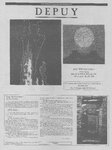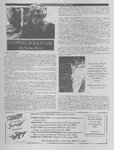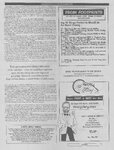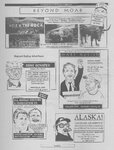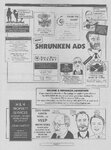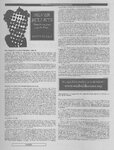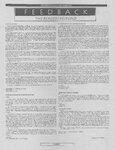| OCR Text |
Show THE ZEPHYR/ AUGUST-SEPTEMBER 2004 commercialize, privatize and motorize the Great Outdoors. To complicate the situation, several powerful Western legislators have emerged in strong opposition to charging basic access fees for use of the public lands while several Eastern legislators are lobbying for enhanced fee authority to support evermore Disneyfied outdoor recreation and tourism. Some legislators are concerned that fee-demo discriminates against low income persons and creates a barrier separating the public from their lands. Others look favorably upon the possibility of selling recreation products as an alternative to resource extraction. Some are eager to see fee-demo bring about increased recreational development and public-private partnerships. Others are insisting upon solid guarantees that fee-demo will not be used to perpetuate the "build it and they will come” attitude which pervades the land management agencies. The motorized recreation community speaks with many voices. While a growing number of users and user groups oppose the pay-to-play concept, most industry associations actively support fee-demo, believing that the more economic value that can be attributed to their sports, the more access motorized recreation will be granted. The non-motorized recreation community is no less conflicted. Those who enjoy the public lands have witnessed the failure of fee-demo to produce meaningful benefits. They have seen congressionally allocated funding disappear only to be replaced with revenues generated by fees. On the other hand, organizations which benefit from Congressional largess or look upon themselves as ‘agency partners’ passively accept fee-demo, fearing that to oppose the SILVER BULLETS lpaenat Svirterd teva near the Edze... program might cost them a seat at the table or a share of the spoils. SCOTT SILVER The environmental community is more cohesive on this issue. Over 200 grassroots organizations are opposed to fee-demo, though many of the big greens have failed to weigh in one way or the other. The Sierra Club and American Lands Alliance are among those national organizations that have opposed fee-demo from the earliest days. In spite of this confused and confusing situation, the fate of recreation user fees may soon be settled. Whether it is settled to your satisfaction could depend upon whether you have made your desires known. OIA COMES OUT AGAINST FEE DEMO...SORT OF Hurray !!! The Outdoor Industry Association, after years of indecision, has come out against fee-demo --- sort of. Representing an $18 billion industry including 4000 manufacturers, Outdoor Industry Association (OIA) Vice President Myrna Johnson recently submitted testimony to the Senate Subcommittee that may soon determine the fate of feedemo --- well sort of. I say “sort of" because the testimony was submitted after the comment period for this April 21st hearing had closed. I say “sort of" because the Outdoor Industry Association continues to speak out of all sides of its mouth with forked tongue. But I give them credit for trying --- sort of. OIA has long supported fee-demo. For an even longer time, OIA has been a member the American Recreation Coalition (the special interest organization that created the program). Yet after years of hemming and hawing and expressing general support for recreation userfees, OIA is now hemming and hawing and expressing general lack of support for the program --- sort of. _ OIA's testimony states that 2/3rd of its member companies “opposed fees for underdeveloped recreation, like trail use, backcountry hiking, and mountaineering.” Yet the testimony shows that OIA goes to pains to inform these Senators that they sort of support the program --- so long as it does not impact their members or sales of outdoor gear. My guess is that fee-demo has adversely impacted both! I would have liked to have used this opportunity to congratulate OIA for having joined the hundreds of organizations that are unequivocally opposed to the fee-demo program. Instead, the best I can do is thank them for refusing to walk in perfect lock-step with their good friends of the ARC. OIA has finally demonstrated that they are not total wimps --- well sort of! RECREATION INDUSTRY PROFITS FROM Calling the program "double taxation” and saying how the federal agencies have mismanaged the fee-monies they've collected and how the costs of overhead, collection and administration have negated the value of the program will likely be far more effective. The fee-demo program is not the beauty-spot its ideological and profit-motivated promoters claim it to be. It is a blight upon the face of public land management. The longer this program is allowed to fester, the greater are the risks of its infection spreading. And where it is true that in polite circles you do not point to such blemishes, in political circles the rules of engagement pos that you do. In politics, decisions are made by those who show up and no-shows suffer the consequences. For more Silver Bullets, go to the web site: www.wildwildernes NPS PASS? If a National Park Pass is purchased directly from the NPS, the agency gets $50 from --which is then subtracted the costs of collection including overhead, administration, etc. What remains from your $50 goes, in theory, to benefit the NPS. If a pass is purchased through a private vendor, the NPSstill has basically the same costs but it rarely receives the same $50. That's a problem for you and for the agencies!! Unless something has recently changed, private vendors are still buying recreation fee passes at a.discount and re-selling -them to the public, usually at manufacturers suggested retail prices. The discount is negotiated between the agency and the vendor and typically ranges from 8 - 20%. Some vendors, notably REI, have gotten a special deal through the National Parks Foundation which allows them to purchase passes at $40 and then to pass that discount directly to its own MEMBERS who have been offered passes at $39.99. Non-members get no such deal. They pay $50. So when a bunch of recreation industry companies (17 in all) suddenly line up to become new National Pass vendors, as detailed in the appended Press Release, the media and the public should be asking whether 100% of the FACE VALUE of these passes actually gets to the land management agencies ... and if not, why not!? My suggestion is to mever purchase a recreation pass from any private vendor unless you know that vendor is giving every cent you've paid directly to the federal agencies. I'd further suggest that when ecome completely disgusted with the ongoing commercialization of your great outdoors, that you consider giving the whole scene a miss. Stop purchasing the products these pple are selling and PERHAPS the Corporate Takeover of Nature can yet be stopped. FEE DEMO UPDATE Politics and the Fee Demo Carbuncle Authorized in 1996 as a rider to the Interior Appropriations Bill, the Recreation Fee Demonstration program was to have been a threeyear test. Seven years and many extensions later fee-demo still festers, threatening public fands and wild places with a sepsis Ed Abbey called ‘Industrial Tourism’ and ‘Wreckreation’. The good news is, this issue may be resolved before the end of the year. The bad news is, it may not be resolved to your liking. For better or worse, fee-demo is in political play with legislators hoping to resolve this issue before they adjourn. Toward this goal, Congress has recently held three fee-demo hearings. The Senate has already passed legislation that would make recreation fees permanent for the National Park Service only (S.1107) while a more wide-ranging and much more harmful bill (H.R.3283), received minimal support in the House. Meanwhile, the Bush “Administration is applying maximal pressure to ensure that permanent interagency fee authority is granted to six federal agencies. Likewise, the recreation industry, lead by the American Recreation Coalition, is pressuring Congress to authorize an entirely new ‘Phase Two’ demonstration program: a program of 6-year duration intended to maximally PAGE 28 As I write these words, House and Senate staffers are trying to draft compromise language that will be acceptable to all parties. Chances are low that their bill will be as bad as H.R.3283 or as good as S.1107. Chances are low that the Bush Administration or the commercial recreation industry will get all they want. Chances are low that the wilderness community will get exactly what it wants or that the non-motorized recreation communi will do any better. But the chances are high that some fee legislation will be passed this year and the chance of that legislation being something you can live with can be increased by your participation in the political process. Every person who cares about wildness should contact their Congressman and both Senators to tell them why they oppose fee-demo. But please show some sensitivity and restraint. Telling your conservative official that you _ oppose fee-demo because it confers advantage to high-impact recreational uses may not be the right tack to take. | S.Org ° “discrepancies,” but suggested to the judge that Clarke appear in court again to clear up the warrant. WHAT CONSENSUS FOR WILDERNESS? Quoted from appended Letter, published in the current edition of High Country News: “Whether such influence and control by a single foundation is or is not good for the public land conservation movement is open to debate, as is Pew's wilderness strategy. Unfortunately, neither Pew's influence nor the wilderness strategy it funds have been adequately debated within the public-land conservation movement .... “ Thank you Felice Pace for trying to engage our ooo in a discussion few seem willing to have. Sometimes it edie that the Death Star has captured so many of our pS. within it's tracking beam, that such debate is not even possible. So here's a thought. Today we are looking at perhaps a half dozen Puldecness proposals, each one worse than the next. How many of the groups engaged in the creation of these specific proposals have been receiving funding from BE 22? Fair question, is it not??? Here’s another excerpt from the HCN letter from Felice Pace. “The May 10th edition contained yet another article praising an effort to protect wilderness. HCN presents these efforts as being promoted by grassroots groups, and as a result, of this reporting, the typical HCN reader is Hes to conclude that there is a true grassroots movement for wilderness in the West. Unloraiaately, this is not the case. In every case of which I am aware and in virtually every Western state, the reported grassroots effort is in reality the implementation of a wilderness strategy formulated by a small group of professional environmentalists working for the Pew Charitable Trusts, a large foundation headquartered in Philadelphia which runs on oil money.... Unfortunately, neither Pew's influence nor the wilderness strategy it funds have been adequately debated within the public-land conservation movement nor by publications like HCN. Maybe we in the environmental movement have become so confused about who we are and how we operate that we are incapable of making distinctions between grassroots and hierarchical or between a movement and an interest group.” |






